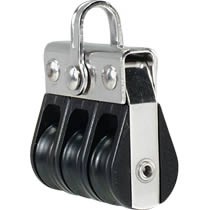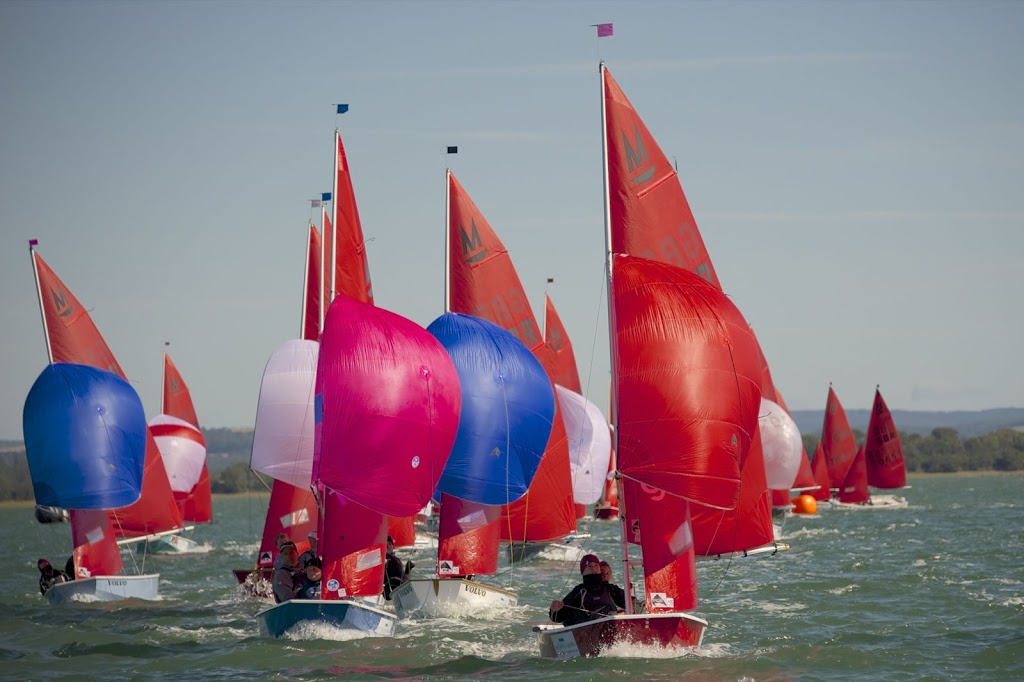
This system started life in 1970s when low stretch rope was not available, and has developed since with with rules changes etc. If you sail with a gaff rig, you may find this is perfectly adequate.
It comprises a length of stainless steel wire with a soft loop in one end (which goes around the boom) and a hard eye in the other end. The soft eye and the wire are covered with soft plastic tube to stop the soft eye cutting into the boom and the wire cutting into the crew, see this detailed specification. It's best to check the riggers have the correct size of plastic tube, otherwise, you might end up with some that is rather oversize (as I did).


Fixed to the hard eye is a double block, in this case it's an RWO R5211 Macro Ball Bearing 28mm Micro Double Block with Shackle Head.

Bolted to the stowage bulkhead is a Sea Sure 16-05 flat eye plate, which has been modified by cutting the plate vertically through the inside edges of the holes (both sides), and four new holes drilled, spaced to pick up the vertical beams each side of the mast web inside the stowage cuddies. The eye should be vertical as in the photo. Needless to say, this is bolted on as it takes the full load of the kicking strap.

Shackled to the eye on the stowage bulkhead is a triple block, in this case an RWO R5120 Macro Ball Bearing 19mm Micro Triple Block with shackle head, and using a twisted forged shackle to get the sheaves vertical.
The kicking strap control line is led back to the thwart and duplicated on both sides. Needless to say, this makes the control line quite long, so it needs to be made from a modern 'low stretch' rope, in this case it's 4mm dyneema with a polyester cover (Marlow Excel racing). In the photos it's the white rope with the pink and black markers.
The port side control line comes from aft, upwards through the left sheave of the triple block, down through the left sheave on the double block it then goes downwards through the centre sheave of the triple block on the bulkhead, then upwards through the right sheave on the double block, then, finally, downwards around the right hand sheave on the triple block and aft, down the starboard side of the boat. See the second photo above. There are probably other ways of running the control line which are as good, or even better.

Aft, it looks like this. A ball on the end of the control line makes it easier to grip to pull the kicker tight. Enjoy, careful you don't break your (wooden) boom.




